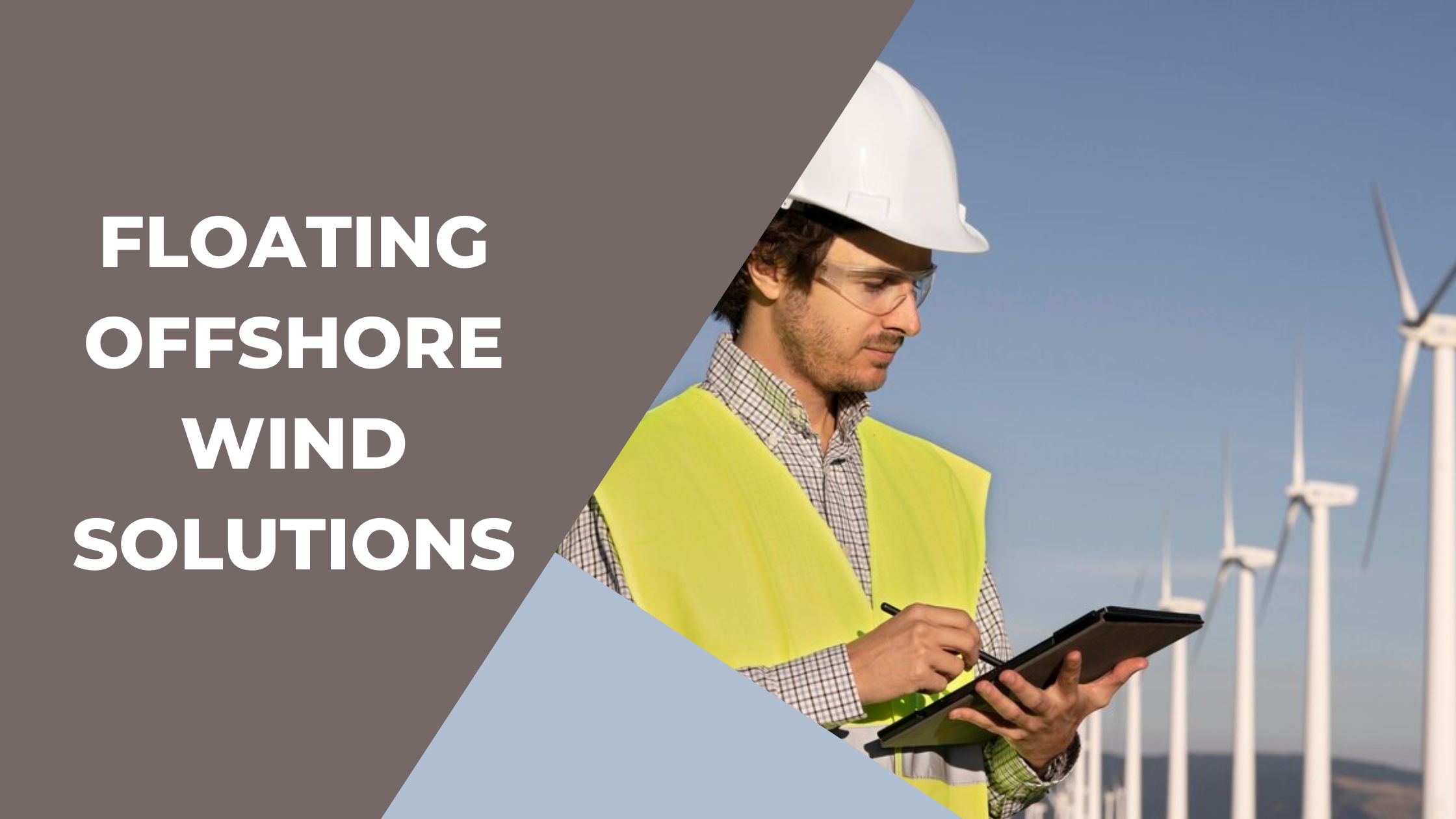Floating Offshore Wind Solutions

Strong 8k brings an ultra-HD IPTV experience to your living room and your pocket.
As the demand for renewable energy grows, floating offshore wind solutions are emerging as a game-changer in the wind energy sector. Unlike traditional fixed-bottom wind turbines, floating wind farms can be deployed in deeper waters with stronger and more consistent wind speeds, leading to increased energy output and efficiency. These innovations are paving the way for a more sustainable and scalable offshore wind industry.
The Importance of Floating Offshore Wind
- Enables wind energy production in deep-sea locations, where fixed-bottom turbines are not feasible.
- Provides access to higher and more stable wind speeds, increasing energy efficiency.
- Reduces the visual and environmental impact of nearshore wind farms.
- Expands global offshore wind capacity, supporting the transition to 100% renewable energy.
Key Challenges in Floating Offshore Wind Solutions
1. High Initial Costs
- The development and installation of floating wind farms involve high capital expenditures.
- Costs are expected to decrease as technology advances and supply chains expand.
2. Grid Integration and Energy Storage
- Floating wind farms require advanced grid infrastructure to efficiently transmit power to shore.
- Energy storage solutions are crucial for balancing supply and demand fluctuations.
3. Maintenance and Durability
- Harsh ocean conditions present challenges for turbine durability and maintenance.
- Remote monitoring and AI-driven predictive maintenance help minimize downtime and operational costs.
Case Studies: Successful Floating Offshore Wind Projects
Case Study 1: Hywind Scotland
- The world’s first floating offshore wind farm, developed by Equinor.
- Achieved a capacity factor of over 57%, outperforming traditional offshore wind farms.
Case Study 2: WindFloat Atlantic (Portugal)
- Europe’s first semi-submersible floating wind farm, with three 8.4 MW turbines.
- Demonstrated the viability of large-scale floating wind projects in deep waters.
The Future of Floating Offshore Wind
- The global floating wind market is projected to exceed $100 billion by 2035.
- Innovations in turbine design, mooring systems, and AI-driven monitoring will enhance efficiency and cost-effectiveness.
- Governments worldwide are increasing investments and subsidies to accelerate the growth of floating offshore wind.
Offshore Wind Conference 2025: Driving Innovation in Floating Wind Energy
The Offshore Wind Conference 2025 is a key industry event that will explore the latest advancements in floating offshore wind solutions. Hosted as part of the 5th Annual Floating Wind Europe, the conference will bring together industry leaders, researchers, and policymakers to discuss cutting-edge developments and future strategies.
Key Topics at Offshore Wind Conference 2025:
- Advancements in floating wind turbine technology.
- Strategies for reducing installation and maintenance costs.
- Integration of AI and digital twins for enhanced turbine monitoring.
- Policy frameworks supporting floating offshore wind deployment.
Why Attend the Offshore Wind Conference 2025?
- Learn from industry experts about the latest floating wind innovations.
- Network with policymakers, developers, and engineers.
- Explore investment opportunities in the expanding floating wind sector.
Key Statistics on Floating Offshore Wind
- The global floating offshore wind market is expected to grow at a CAGR of 30% from 2025 to 2035.
- Floating wind technology could unlock 80% of the world’s offshore wind potential.
- Countries like Norway, Japan, and the U.S. are leading investments in floating wind projects.
FAQs
1. What are floating offshore wind turbines?
Floating offshore wind turbines are wind turbines mounted on floating platforms, allowing them to operate in deep waters where traditional fixed-bottom turbines cannot be installed.
2. How do floating wind farms impact energy production?
Floating wind farms provide access to stronger and more consistent wind resources, leading to higher energy output and improved efficiency.
3. What role does the Offshore Wind Conference 2025 play in advancing floating wind technology?
The conference serves as a platform for industry collaboration, showcasing technological advancements, policy discussions, and investment opportunities in floating offshore wind solutions.
4. What are the cost trends in floating offshore wind?
While initial costs are high, technological advancements and economies of scale are expected to significantly reduce expenses over the next decade.
Conclusion
Floating offshore wind solutions are set to redefine the future of wind energy by unlocking new areas for renewable power generation. Despite challenges, continued innovation and investment are driving rapid advancements in this sector. Events like the Offshore Wind Conference 2025 play a crucial role in fostering discussions, partnerships, and technological breakthroughs that will shape the future of offshore wind energy.
Note: IndiBlogHub features both user-submitted and editorial content. We do not verify third-party contributions. Read our Disclaimer and Privacy Policyfor details.







